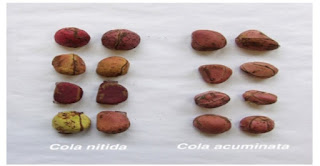EXOCRINE FUNCTION OF PANCREAS
Pancreas is a soft glandular organ lies beneath the stomach. It is function on both endocrine and exocrine secretions.Endocrine part containing about 20 percent,islets of langerhans secretes insulin and glucagon. While that of Exocrine part containing about 80 percent,large compound acinar gland secretes pancreatic juice which is collected by system duct.
Pancreatic juice and its composition;Pancreatic juice is alkaline with ph value of 7-8 and the most important digestive juice secreted abundantly in response to the presence of chyme in the upper part of small intestine.These juice are varies with flow rate,mainly Sodium(Na) ion and Chlorine (Cl)ion at low rate.while Sodium(Na)ion and bicarbonate(HCo3)ion at high rate.
About 1500ml is secreted daily with high content of bicarbonate.
It is composed of first and second part.First part is an aqueous bicarbonate ion, Na+, K+, Cl- and water secreted by the epithelial cells lining the pancreatic duct.Second part is an enzymatic components such as trypsinogen,chymotrypsinogen,procarboxypolypeptidase,pancreatic amylase and lipase.
Mechanism of pancreatic secretion are as follows;
Acinar cells; This secretes Na+ and Cl- at low volume and almost the same concentration with plasma.
Ductal cells: This modifies the initial secretions by secreting Hco3- and absorbing Cl- via Cl-Hco3- exchange mechanism in the lumenal membrane.
Bicarbonate ions production : In the ductule cells, C02 combines with H20 by carbonic anhydrase enzyme, forming H2CO3, which dissociate into H+ and HC03-, H+ is secreted into the blood in exchange for Na+ which is actively transported into the ductules of the lumen together with HCO3- to balance the negative ion(forming NaHC03).
Acinar cells secretes Na+ and Cl- at low volume and almost the same concentration with plasma
Ductal cells modifies the initial secretions by secreting Hco3- and absorbing Cl- via Cl-Hco3- exchange mechanism in the lumenal membrane
Bicarbonate ions production : In the ductule cells, C02 combines with H20 by carbonic anhydrase enzyme, forming H2CO3, which dissociate into H+ and HC03-, H+ is secreted into the blood in exchange for Na+ which is actively transported into the ductules of the lumen together with HCO3- to balance the negative ion(forming NaHC03).
Mechanism of secretion;In pancreas, enzymes are secretes in an inactive form to avoid auto digestion of the pancreas and then later activate in small intestine.
Trypsinogen is secreted at large volume some in an active form. An enzyme called trypsin inhibitor arrest its action through binding.
Control of pancreatic secretion is as follows;
Pancreas is controls by both hormonal and nervous factor in regarding to the phases of secretions.
Cephalic phase are parasympathetic by presence of food in mouth and sympathetic stimulation is initiated by sight,smell and thought of food
Gastric phase is by Gastrin causes the pancreatic secretion which is secreted by the stomach when food enter and it's very reach in enzymes and also by vagal stimulation.
Intestinal phase is by pancreatic juice is secreted when chyme enters the intestine which is stimulated by two hormones.
1.Secretin-is secreted by duodenal mucosa,act by causing a watery secretion very reach in bicarbonate to alkalize the acidic chyme
2.CCK secreted by duodenal and jejunal mucosa,it stimulate the secretion of pancreatic juice that is very rich in enzymes purposely for digestion of fat and protein.
Applied physiology of pancreas includes pancreatitis and cystic fibrosis.
In conclusion, The major pancreatic secretions are digestive enzymes, sodium bicarbonate for neutralization of acidic chyme and water.




Respect
ReplyDelete